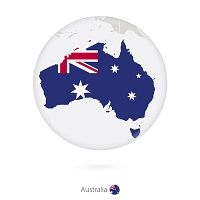Hep C: Australia Provides DAA's in Program to Eradicate Virus
Fewer than a quarter of people living with diagnosed hepatitis C infection in Australia as ov December 2015 had ever received treatment. But the arrival of direct-acting antivirals on Australia's Pharmaceutical Benefits Scheme has changed that.

Australia is on track to cure more people of hepatitis C (HCV) infection in 2016 alone than it has in the past 20 years, according to a report from the Kirby Institute of the UNSW Australia.
The report, released as the 10th Australasian Viral Hepatitis 2016 Conference, found an estimated 227,306 people were living with HCV in Australia in 2015. Among them those with cirrhosis had doubled over a decade as the population aged, and interferon treatment was not having as much of an impact as hoped.
But on March 1, 2016, the Australia Pharmaceutical Benefits Scheme put new direct-acting antiviral (DAA) treatments for HCV on its approved drug list.
"This puts Australia on track to cure more people of hepatitis C in 2016 alone than it did in the past two decades, Prof. Gregory Dore and colleagues at the Kirby Insinuate reported.
The data are in Kirby"s Hepatitis B and C in Australia Annual Surveillance Report Supplement 2016.
According to that report, most of the known cases newly reported in 2014 were in people ages 25 to 39.
The rate of new cases has remained stable since 2011, with one exception: among the Aboriginal and Torres Strait Islander population the HCV infection rate has increased by 43% in the past five years, from 115 per 100,000 people in 2011 to 165 per 100,000 in 2015.
That means the rate of HCV infection in Australia's indigenous people is four times greater than in the rest of the population, where it is 40 per 100,000.
The majority of the cases in indigenous people is traced to injection drugs (70% of cases).
In addition to making the new antivirals available, the government is also putting more emphasis on needle exchange programs. .
The government's DAA treatment program reached 26,360 people with HCV from March to July 2016.
That amounts to about 12% of the population that has the virus.
Though the program is on track in its goals of eliminating HCV infection in Australia "Sustained efforts to diagnose chronic HCV and expand treatment coverage will be required," the authors not.
Aboriginal and Torres Islander people comprise about 3% of the country's population, but accounted for at least 9% of all newly diagnosed HCV infections.
Reporting among these indigenous people has improved, partly because of surveys being used in needle exchange programs, the authors said.
Further Coverage:
Plant Extract Inhibits HCV Study Shows
Eradication of HCV Depends on Drug Users’ Access to Treatment
Low Percentage of Patients Screened for Hepatitis C at Community Health Centers